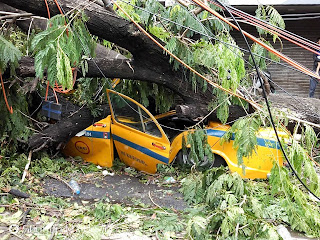Image Source COMMON NAME: Locusts SCIENTIFIC NAME: Acrididae TYPE: Invertebrates DIET: Herbivore GROUP NAME: Swarm AVERAGE LIFE SPAN: Several months SIZE: 0.5 to 3 inches WEIGHT: 0.07 ounces SIZE RELATIVE TO A PAPER CLIP: Locusts have been feared and revered throughout history. Related to grasshoppers, these insects form enormous swarms that spread across regions, devouring crops and leaving serious agricultural damage in their wake. Plagues of locusts have devastated societies since the Pharaohs led ancient Egypt , and they still wreak havoc today. Locust swarms are typically in motion and can cover vast distances—some species may travel 81 miles or more a day. They can stay in the air for long periods, regularly taking nonstop trips across the Red Sea . In 1954, a swarm flew from northwest Africa to Great Britain, while in 1988, another made the lengthy trek from West Africa to the Caribbean, a trip ...

